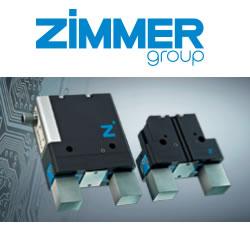Kitware to Improve Air Force Video Analyst Workflows with VIRAT
This new BAA funding will be used to transform analyst workflows and enable more efficient extraction of relevant information from full motion video (FMV) feeds.
Clifton Park, NY July 16, 2013
Kitware, a leader in the development of advanced video analysis algorithms, today announced a new broad agency announcement (BAA) award from the Air Force Research Laboratory to integrate Kitware's Video and Image Retrieval and Analysis Tool (VIRAT) functionality with the agency's Planning & Direction, Collection, Processing & Exploitation, Analysis & Production, and Dissemination eXperimentation environment (PCPAD-X). Integration of these two tools will improve analyst performance in exploiting Full Motion Video (FMV).
FMV exploitation is currently very labor intensive, and often involves teams of people monitoring a single video feed to extract the value for the primary mission. There are a number of drawbacks to this approach as it requires analysts to monitor the video feed and "call out" events for another analyst to record. The monitoring analysts focused on finding mission-specific elements of interest may overlook other events and objects of interest to other parties. In addition, the communication of events between shifts of analysts on a particular mission, or to outside entities, is cumbersome and may result in non-standard, fragmented descriptions of events and other salient information.
Kitware has developed a powerful FMV exploitation (FMVE) capability that addresses a number of drawbacks to the current process. The VIRAT tool, developed primarily under DARPA funding, automatically processes FMV in real-time to extract and record elements of interest, including moving targets and events, or objects that match a specific appearance model.
For this project, VIRAT will be integrated with PCPAD-X to extend its capabilities to increase analyst productivity, provide an improved user interface and more standardized communication and recording mechanisms, and include a state-of-the-art object tracking system for automatically detecting unusual events in the data using normalcy models.
"We're thrilled that the Air Force Research Laboratory has chosen VIRAT as a core component of PCPAD-X," said Dr. Amitha Perera, Assistant Director of Computer Vision at Kitware and Principal Investigator on this project. "We are confident that our system will transform analyst workflows and provide more accurate and efficient extraction of information from FMV feeds."
This work is supported by the Air Force Research Laboratory under Contract No. FA8750-13-C-0107. The views, opinions and/or findings contained in this report are those of the author(s) and should not be construed as an official AFRL position, policy, or decision unless so designated by other documentation.
Featured Product

Zimmer Group - THE PREMIUM GRIPPER NOW WITH IO-LINK
IO-Link is the first standardized IO technology worldwide for communication from the control system to the lowest level of automation.
